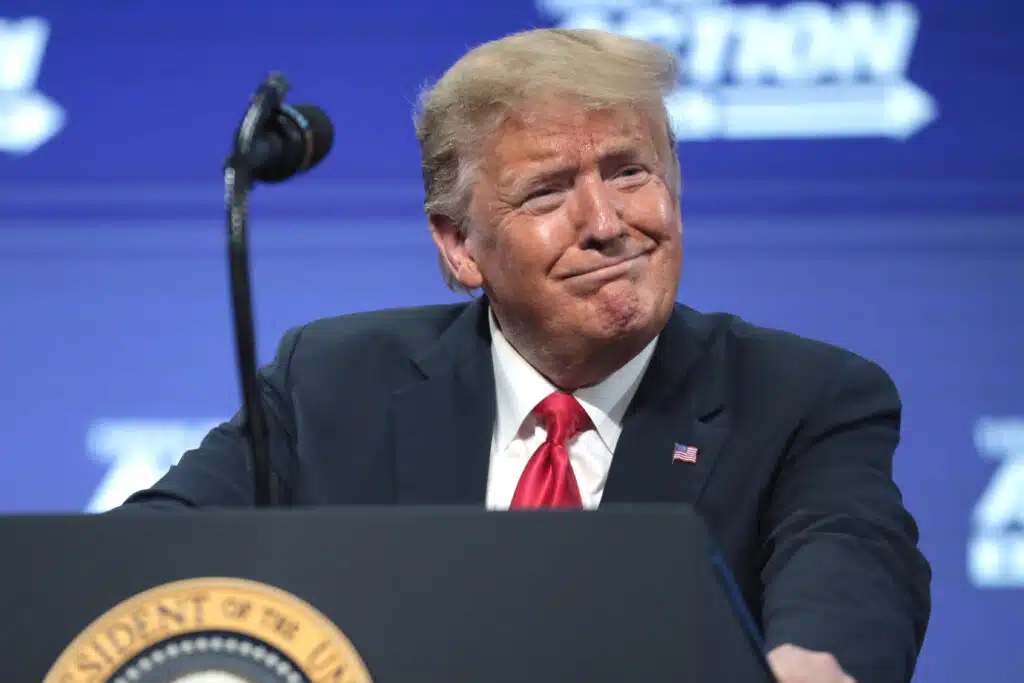
The Trump Doctrine of Visible Leverage
Power No Longer Implied, But Performed
Historians often search for the central idea that animates a president’s foreign policy. Reagan believed in deterrence through strength. Bush valued preemption to prevent threats before they materialized. Obama pursued engagement to reshape adversaries through dialogue. Each relied on leverage as a tool, but only as a means to an end.
Donald Trump has flipped that equation. His emerging Trump Doctrine of Visible Leverage makes the use of leverage the strategy itself. For Trump, leadership is not about quiet persuasion behind the scenes, it is about performing dominance in full view of friend and foe alike. Power, in his worldview, fades when hidden.
Leverage, therefore, must be visible, transactional, and sustained. The performance, quite literally, is the policy.
Gaza: Leverage in Motion
The recent U.S. brokered ceasefire between Israel and Hamas, secured through direct White House intervention, captures Trump’s approach. To his administration, this was not a moral breakthrough, but proof of leverage used and displayed. The message: the United States had leverage, exercised it, and wanted everyone to witness it.
The next phase, enforcement, will test whether that leverage can be institutionalized. Egypt’s command role and regional support from Ankara and Jakarta may determine the outcome, but Trump cares most about continued visibility. If stability holds, it strengthens his conviction that leverage expressed openly can substitute for long-term diplomacy. If it fails, it becomes another cautionary tale about leverage squandered.
Ukraine: Leverage in Decline
Ukraine presents the opposite dynamic. Trump’s recent meeting with President Zelensky signaled a pragmatic shift, pressure to consider territorial concessions and a recognition that America’s leverage in Eastern Europe has eroded. To Trump, Western influence has become abstract, more rhetorical than tangible.
He defines real leverage as something measurable: sustained logistics, industrial output, and coercive economic power, not symbolic pledges. Without these visible instruments, he concludes U.S. leverage is too theoretical to drive outcomes. In Trump’s calculus, negotiations begin after leverage is achieved, not before. That conviction is why he reframes wars until the advantage returns to him, his version of strategic patience.
The Caribbean: Leverage Comes Home
Nowhere is Trump’s doctrine more vividly performed than in the Caribbean and northern South America, where a new mix of military strength, economic leverage, and political theater has merged into what the administration calls “hemispheric defense.”
In recent weeks, the administration has halted all U.S. assistance to Colombia, cutting an estimated $230 million in aid after President Gustavo Petro accused Washington of “murdering a fisherman” in a maritime strike targeting narcotics traffickers. At the same time, U.S. forces have conducted ten lethal strikes against alleged cartel-linked vessels across the Caribbean and eastern Pacific, killing more than forty suspected smugglers, according to reports from the Associated Press, PBS, and the New York Times.
The Pentagon has confirmed the deployment of the USS Gerald R. Ford Carrier Strike Group to the region, transforming a counter-narcotics mission into what analysts call “a broader initiative of hemispheric defense.” Venezuela’s Nicolás Maduro responded by accusing the United States of “fabricating a war in the Caribbean,” charging that the move represents pretext for regime change.
In traditional terms, the campaign resembles counter-narcotics enforcement. In modern Trump terms, it is deterrence through spectacle, an unmistakable signal to both allies and adversaries. Hemispheric defense is back, but in transactional form: partnerships require proof, and compliance becomes performance. Whether it reduces cocaine exports is secondary. The primary objective is to display power.
The Performance of Power
The Trump Doctrine of Visible Leverage rejects the old Washington assumption that strength lies in predictability and discretion. In its place stands a communication strategy disguised as grand strategy, built for a media age in which optics rival outcomes. Tariffs, sanctions, and deployments are the cues of statecraft, not the consequences of it.
Trump’s approach fuses force, finance, and narrative into one system of influence centered on presence. When leverage is secure, he moves with speed, as in Gaza or the Caribbean. When it wanes, as in Ukraine, he pauses and repositions, waiting to recover the visual upper hand.
Critics view this as reactive. Admirers call it efficient. Both are correct: it converts diplomacy into real-time deal flow.
A Doctrine for the Television Age
The Trump Doctrine is foreign policy rewritten for an audience skeptical of invisible wars and endless summits. It prioritizes perception over patience, demonstration over deliberation. The metric of success is no longer what is quietly achieved but what is unmistakably displayed.
If the Gaza ceasefire endures, the administration will claim proof that visible leverage stabilizes. If Ukraine falters, Trump will say invisible leverage failed. And in the Caribbean, where aid freezes and missile strikes unfold side by side, the administration will draw the same conclusion: power not performed is power lost.
The question for America’s allies and for its adversaries is whether such power, broadcast so publicly, can remain credible after the lights dim.
Leverage, even when visible, still depends on credibility and trust, and trust, once spent too publicly, is the hardest currency to regain.
Mike Lyons USMA ’83 is a military analyst and works for the West Point Association of Graduates. He is a combat veteran, business leader, and frequent contributor to national media outlets including CNN.
Sources:
Associated Press – Trump announces an end to U.S. aid to Colombia (Oct. 19 2025)
Reuters – U.S. to escalate military presence in South America with aircraft carrier group (Oct. 24 2025)
The New York Times – U.S. deploys aircraft carrier to Latin America as drug operation expands (Oct. 24 2025)
Hoover Institution – Hemispheric Defense Is Back (Oct. 20 2025)
This article was originally published by RealClearDefense and made available via RealClearWire.



